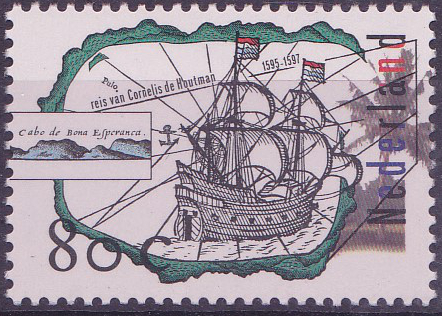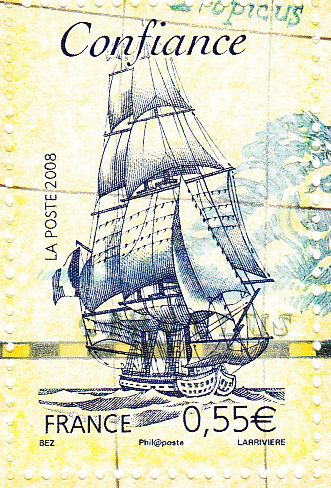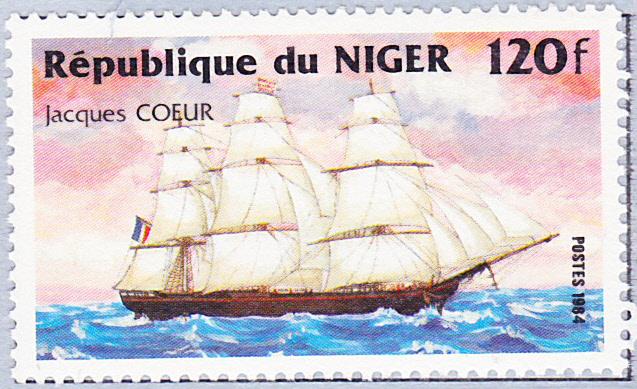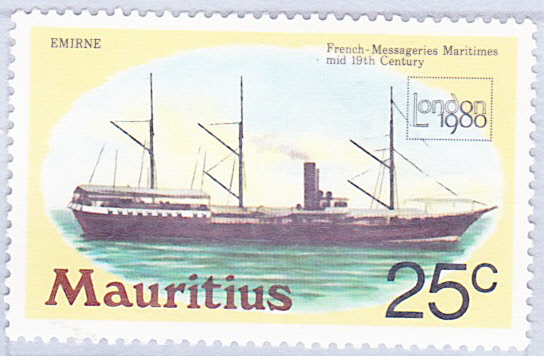|
Calling in Mascarene Islands |
| Located in the South-west of the Indian Ocean, with approximately thousand kilometers off the Eastern coast of Madagascar, the archipelago of Mascareines in the Indian Ocean consist in three main islands: Reunion, Mauritius and Rodrigues, and several close small islands. | |
| Located by the Arab navigators, the archipelago is discovered by the Portuguese Pedro de Mascarenhas on February 9th, 1513. The archipelago was so named in his honor in 1528 by Diogo Rodrigues, which gave his name to Rodrigues. | |
|
On June 25th, 1638 France takes possession of the archipelago before the British do the same on June 29th, 1642. They landed on Saint-Paul's bay of La Réunion. |
|

|
|
| In 1642, the governor of the island of Madagascar, Jacques de Pronis, embarks on a ship of the French East India Company, again takes possession of the island named Mascarin and plants there a flag at a place called still today the Possession. | |

|
|
| Thanks to Pierre Poivre, appointed in 1766 Intendant of Isles de France and Bourbon, the archipelago of Mascareine became a prosperous colony. Poivre, botanist and member of several academies of sciences, acclimatize spices and the new plant species on the islands of the archipelago . | |

|
 |
|
The first colonizers of Mauritius are the Dutchmen in 1598 who give him his name, Mauritius in honor of prince Maurits Van Nassau of Holland. |
|

|

|
| Dutch fluyt MAEN transports the mail of the governor of Mauritius, C.S. Goyer, with the directors of the East India Company in August 1638. The fluyt was the largest trading vessel in the 17th century, round-sterned, flat-bottomed, and a relatively narrow vessel. | |
| Then the island is colonized by the French from 1715 to 1810 and becomes Ile de France, managed by the East India Company (from 1722 to 1767). Bertrand-François Mahé de La Bourdonnais, appointed governor by the East India Company manages the colony frrom 1735 to 1746 and founded the town of Port-Louis. | |
 |
 |
| During the Napoleonean wars, the island of France (Maurice) and the island Bonaparte (Réunion) become it appointment of the French corsairs who organize profitable raids against the British commercial ships. Between 1800 and 1801, the CONFIANCE of Surcouf carries out 200 million pounds of catches. | |
 |
 |
| The history of the SAINT-GERAN inspired in Bernardin of Saint-Pierre for his novel Paul and Virginia. At the time of its 4th voyage, the vessel of the French East India Company, a 700 tons of 120 x 33 feet armed with 18 guns and with 72 crew, wrecks on August 18th, 1744 on the reefs of Poudre d'Or off Maurice. Only 9 people out of 192 on board survive. The bell and and some remainders of the vessel, which become a place of diving, are at the National History Museum of Mahebourg, Maurice. | |
| Built in 1815 in Jersey, “Falmouth Packet” LORD SIDMOUTH makes various journeys in America, Jamaica and the Mediterranean; recorded in 1832 as whaler of the South Seas, she calls at Maurice on June 23rd, 1834. | PILOT, trading vessel of 394 tons, used between India and South Africa, calling at Maurice. |
 |
 |
| The 685 tons wooden ship SEA BREEZE, built in 1856, is used until 1874 for the trade between London and Maurice from where it brings back cane sugar. | The JACQUES COEUR built in 1855 in Granville belongs to a fleet of sailing ships which are integrated in a “round the world line”: after having supplied the fisheries of Saint Pierre and Miquelon with salt, she set out again with a dried cod cargo for Réunion where they charge with sugar bound for India, return with coolies to the Antilles, reload sugar and wood for the return in France. |
|
The end of the 19th century and the beginning of 20th will see the expansion of the maritime relations with Mascareignes: the line U then the line V connect France to La Réunion |
|
 |
|
| EMIRNE, iron steamer with propeller, rigged in 3 masted barque, delivered at La Ciotat in January 1864, is commissioned on October 17th on the line of Suez to Réunion and Maurice via Aden and Seychelles until the opening of Suez Canal in 1869, then is affected until 1873 on Madagascar lines. | |
| Launched on November 26th, 1924, EXPLORATEUR GRANDIDIER leaves Marseilles on April 4th, 1926 bound for the Indian Ocean before passing on Indo-China line from 1930. She is sunk by German on July 16th, 1944 to block the Mirabeau basin in Marseilles. | Launched in 1922 at La Ciotat, LECONTE DE LISLE serves for the Messageries Maritimes the Indian Ocean and Indo-China with 230 passengers in 3 classes. In spite of a stranding on a mine after its seizure by Japanese in 1944, she goes again on the line from 50 to 52, is used as transport of troops then is demolished into 56. |
|
Whereas the plane supplanted the boat for passenger transport to Réunion, the ship is still used for the traffic inter-islands. |
|
|
In 1934, Colonial Steamships Co buys a Portuguese cargo liner of 1903: ZAMBEZIA connects Maurice to Rodrigues from 1934 to 1951. |
|
 |
 |
| Since 1990, MAURITIUS PRIDE ensures the connection between Réunion, Maurice and Rodrigues for 248 passengers in lounges; she can also transport containers in holds and on deck. | Built in 1950 by a Dutch yard for the transport of copra, SIR JULES connects the islands before being sold in 1962 in Tanzania. |
| PIERRE LOTI is in 1970 the last ship of the MM to connect Madagascar on the line inaugurated in 1882 by the NATAL. She is the third ship of a series of 4 diesel engine steamers, the last being Jean Laborde. | Delivered in 1953, JEAN LABORDE connects Marseilles to Réunion until 1970. On 3/8/1991, Jean Laborde, become OCEANOS, wrecks during a voyage between East London and Durban at 2 miles off Coffee Bay with 361 passengers and 184 crew. |
|
Fishing and tourism are now essential components of the economy of these islands. |
|
| The fishing vessels, sailing in southern water, are armed by companies from Réunion. ISLAND BOURBON and MASCAREIGNES III, palangriers-freezers built in 2001 in the Building sites Piriou de Concarneau, long 49, 55 m fish mainly the southern légine as well as pomegranate and the line. | |
|
The Island of Réunion, where is located the administration of the French Antarctic, was used as supply base for expeditions to the southern islands (Crozet, Kerguelen). |
|
| DIVES, a steam-sail 1,600 tons transport launched in 1870, with a 600 hp engine, in 1874, under command of lieutenant Duperre, joined Saint-Paul with a team of French astronomers to observe the Venus passage in front of the sun. | MARION DUFRESNE one is accustomed of Réunion: she carries out, starting of the Port of Réunion, four southern rotations per year to serve the Crozet , Kerguelen and Amsterdam islands. |
 |
 |
| During his round the world tour with FIRECREST, a 12 meters cutter, Alain Gerbault calls at Réunion in October/November 1928. Leaving Cannes on April 25th, 1923, she is back in France at Le Havre on July 26th, 1929 after the first crossing of the Atlantic in solo from East to West. | After the Festival of the sea which had had a favorable impact on tourism, Mauritius organizes Carnavel of the Sea in order to benefit fully from its situation. |
|
|
Click below for the pages list |
|
|
Page on line on:
|